Results 1,911 to 1,920 of 12094
Thread: Anandtech News
-
06-03-12, 07:30 PM #1911
Anandtech: ASUS Zenbook Prime (UX21A) Teardown
ASUS' Zenbook Prime is due for its official launch later this month. As we found in our early review of the UX21A, ASUS addressed nearly every problem we had with the original Zenbook. While Ultrabooks won't really get super exciting until Haswell, if you've been holding out for a non-Apple ultraportable, the Zenbook Prime is likely just what you've been waiting for. My only major concern about the Prime is its Sandisk U100 SSD, which simply isn't very good - particularly compared to what Apple is expected to be shipping in the next MacBook Air. I've shared my test data with ASUS with hopes that we may see the return of another SSD option for the Zenbook Prime prior to launch, but it's too early to tell if that will happen.
I have been running additional battery life tests on the Zenbook Prime, but I didn't get a chance to finish them before hopping on a plane to Taiwan for this year's Computex. I did get the chance to dissect the new Prime however.
Getting into the new Zenbook is no different than its predecessor. Ten torx bits keep the back panel on, while only four phillips screws hold the motherboard in place. Another five keep the battery secure as well. Despite the only easily removable component in the Zenbook Prime being the SSD, the notebook is remarkably simple to teardown as long as you have the right screwdrivers (the same drivers that work on the MacBook Air work on the Zenbook Prime).
Internally the Zenbook Prime is very similar to the original Zenbook, and Apple's MacBook Air at that. The majority of the volume of the chassis is occupied by the 35Wh battery. The CPU and PCH are cooled by a single fan and heatpipe assembly. With Haswell the CPU and PCH will be integrated into a single chip (just for Ultrabooks), which should help further reduce the motherboard size. Eventually I wouldn't be too surprised if we could fit a high performance x86 motherboard onto a PCB not much larger than what Apple ships in the iPad.
ASUS still employs a split PCB design for the Zenbook Prime. The second USB 3.0 port and audio jack are on a separate PCB that connects via a ribbon cable to the main board.
The SSD is a custom interface and form factor that isn't compatible with Apple's MacBook Air, although the two look similar. A single phillips screw holds the SSD in place.
You can see the two antenna pigtails for the Intel Centrino Advanced-N 6235 2x2:2 WiFi solution, an improvement over the previous model. The only thing of interest on the flip side of the motherboard is the 4GB of non-removable Elpida DDR3-1600. ASUS is testing 8GB today but it's unclear when that will make it to market - it could be as long as the Haswell version next year.
Is there room for improvement? Not without significant silicon integration I'm afraid. The Zenbook Prime's motherboard today is about as compact as you can get given currently available components. We'll see the next big step with Haswell (single-chip CPU + PCH), but eventually you can expect even more on-board integration. An obvious candidate is to solder down the SSD and reduce the number of NAND packages. That's unfortunately the tradeoff of portability: an appliance that really can't be upgraded. There is some hope with high-bandwidth interfaces like Thunderbolt however to give you more storage, and perhaps even PCIe expansion outside of these ultra portable PCs. I'm always a fan of having the best of both worlds.
Gallery: ASUS Zenbook Prime (UX21A) Teardown





More...
-
06-03-12, 10:00 PM #1912
Anandtech: Acer's Full HD Touch Enabled Windows 8 Aspire S7 Ultrabooks
Acer joined the likes of ASUS with its announcement of the Full HD 11.6-inch and 13.3-inch Aspire S7 ultrabooks. Unlike ASUS however, Acer is announcing touch support with the Aspire S7. More specs and details to follow.
The backside of the S7's screen is a combination of glass and metal. The entire chassis measures 12mm thin. The S7 can also be laid fully flat thanks to its 180-degree screen hinge for use in table-top touch mode.
Similar to ASUS and Apple, the S7 features a backlit keyboard.
The S7 will range in price between $999 and $1799.
Gallery: Acer's Full HD Touch Enabled Windows 8 Aspire S7 Ultrabooks




More...
-
06-03-12, 10:00 PM #1913
Anandtech: Acer Introduces Windows 8 Tablets with Docks: Iconia W510 & W700
We just sat down for Acer's Computex press conference in Taipei. Today it's unveiling two Windows 8 tablets: the Iconia W510 and W700.
The W510 features a 10.1-inch IPS touchscreen and features a keyboard dock similar to the ASUS Transformer series. The keyboard dock can rotate into presentation mode, making it more flexible than conventional docking tablets. Acer claims up to 18 hours of battery life on a single charge. The W510 appears to be ARM based, although we don't know the SoC inside it. The W510 falls in the ~$400 to $799 price range.
The W700 features an 11.6-inch full HD (1920 x 1080) touchscreen with a tilting cradle:

The W700 appears to be x86 based, and Acer claims 8 hours of battery life on a single charge. Pricing appears to be in the $799 to $999 range. Acer implied but wasn't clear whether the cradle and keyboard are included in that price.
More on specs and details as we get them.
Gallery: Acer Introduces Windows 8 Tablets with Docks: Iconia W510 & W700





More...
-
06-03-12, 10:30 PM #1914
Anandtech: Acer Completes its Windows 8 Lineup with Touch Enabled All-in-Ones
Two more Acer announcements for you today. The Acer Aspire 7600U (27-inch, 35mm thick, 64-point multi-touch, 1080p) all-in-one and the Aspire 5600U (23-inch).
The 7600U swivels at all four sides and can be laid flat for multi-user tabletop multi-touch operation. The 7600U starts at $1599 while the 5600U starts at $999.
I will say, Acer's entire Windows 8 lineup looks pretty impressive. With top to bottom touch support and a clear focus on flexibility, this isn't the Acer we saw just a couple of years ago.
Gallery: Acer Completes its Windows 8 Lineup with Touch Enabled All-in-Ones

More...
-
06-03-12, 11:00 PM #1915
Anandtech: Hands on With Acer's Iconia W510 x86 Windows 8 Tablet
Check out the gallery below for tons of shots of Acer's 10.1-inch Iconia W510 x86 Windows 8 tablet with keyboard dock.
It's clear that touch and ultra thin form factor x86 are going to be two major themes of this year's Computex, and on a larger scale two major themes of Microsoft's battle against Apple later this year. It's very telling that Acer isn't showing off any ARM based Windows 8 tablets at the show. Full x86 compatibility is going to be a big feature for dockable Windows 8 tablets as an iPad alternative.
Gallery: Hands on With Acer's Iconia W510 x86 Windows 8 Tablet
More...
-
06-03-12, 11:30 PM #1916
Anandtech: TI Shows off OMAP5430 GPU Performance before Computex
Before MWC 2012, TI showed off OMAP5 performance in a video which compared CPU performance to Nvidia's Tegra 3 SoC. The occasion this time around is Computex, and TI has delivered once more with a video comparing GPU performance on the OMAP5430 to the iPad 3's A5X. As a reminder, OMAP 5430 is designed for a 28nm process and consists of two ARM Cortex A15s and two Cortex M4s alongside SGX544 MP2 graphics, whereas Apple's A5X is two Cortex A9s alongside SGX543MP4 graphics.
The video shows the OMAP5430 tablet running GLBenchmark 2.5 at 1080p (the newest upcoming version we're eager to get our hands on) alongside what is basically without doubt an iPad 3.
Performance on the OMAP5430 tablet is shown to be 38 FPS on screen (1080p) and 45 FPS offscreen without vsync, compared to 34 FPS and 43 FPS respectively for the "market-leading tablet." There's another slide showing comparisons to OMAP4470 which consists of two Cortex A9s alongside SGX544MP1 graphics. You might be wondering how an SGX544MP2 can match an SGX543MP4 - the answer is most likely just higher clocks on OMAP5430's 544s compared to A5X's 543s. It's hard to know for certain, but this is the most logical answer - you can ultimately either increase ALUs or increase clocks to get to a given performance target. Either way, TI's OMAP5430 is shaping up to be quite a performant SoC both in CPU and GPU at this point, and we look forward to seeing and benchmarking a lot more of it before summer is over.
Source: Texas Instruments
More...
-
06-04-12, 12:00 AM #1917
Anandtech: Samsung Galaxy S III Coming To 5 US Carriers In June
Last year's Galaxy S II US launch was . . . complicated. In addition to waiting for months after the International launch, US carriers saw fit to vary their devices drastically. No more, though. Today Samsung announced that the five US carriers that would be carrying the Samsung Galaxy S III this June: Sprint, T-Mobile, AT&T, Verizon Wireless and US Cellular. And in a departure from prior Galaxy S launches, all five devices will sport the same screen size, SoC and RAM. And if you were looking forward to a quad-core Exynos, you should put your order in for the International variant.
The US variants will feature LTE and HSPA+ 42Mbps speeds alongside their dual-core Snapdragon S4 SoCs, most likely the MDM8960 that has suddenly found its way into every major Android launch. The Krait cores will be backed up by 2GB of RAM and paired with the 4.8" Super AMOLED HD displays that grace the International Galaxy S III. Even that massive 2100 mAh battery will be showing its face on all variants, and every indication is that the bodies won't vary far from the International version, if at all. Pricing and retail availability will be announced on a per carrier basis, but Samsung commented that the phones would start as low as $199 and launch this month on all five carriers.
Ultimately, in the US, users are not Samsung's customers, nor any other OEM's, it is the carriers that order the specifications and features they want to offer their subscribers. It is somewhat unpecedented that an Android device launching on 5 US carriers at once should be specced so identically, and makes clear that battery life and features are of more interest to carriers than core counts. If our HTC One X (AT&T) is any indication, these phones shouldn't disappoint.
Gallery: Samsung Galaxy S III Coming To 5 US Carriers In June





UPDATE: And the Coming Soon pages are starting to pop-up. AT&T is first out of the gates, though the rest are soon coming, no doubt. The images seem to confirm that the Galaxy S III variants will share a common design across all carriers.
More...
-
06-04-12, 12:31 AM #1918
Anandtech: Intel and Thunderbolt Devices for Windows
As part of Computex, Intel invited the worlds media to discuss Thunderbolt. While nothing much new was said over what Anand has already discussed and public, we did come away with some information and an interesting look at some of the future Thunderbolt enabled devices.
A lot of the discussion was about Windows certification, given how TB has been an Apple only technology until fairly recently. In the Q&A, I asked specifically about hot-plug capabilities. I was told that Windows certification will only be given if the device or the host in the thunderbolt chain can fully support hot-plug. Given the results we have seen with the current certified motherboards with pre-certification Windows drivers, it seems there is still some way to go to support this feature.
We got a glimpse at the Thunderbolt controllers to be part of 2012 :

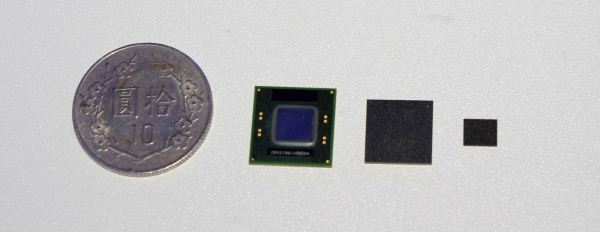
The final device only Thunderbolt controller measures 5.6mm across.
On display were a few motherboards that will feature Thunderbolt technology. Anand has already probed the MSI Z77A-GD80, the ASUS P8Z77-V Premium and the Intel DZ77RE-K75, but on display were a pair from Gigabyte (Z77X-UP5 TH, UP4 TH), an unnamed Foxconn board, and a pair from ASRock (Extreme6/TB), one with a pair of Thunderbolt ports however judging by the chip layout it only has one TB controller.
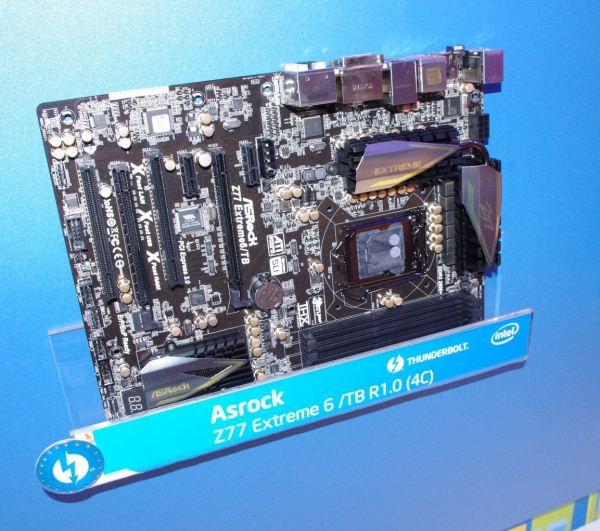
Several TB-enabled ultrabooks were on display, including models from Gigabyte, ASUS and Toshiba, as well as an All-In-One from MSI. Storage was also shown, with ODM models as well as RAID devices from Promise, QNAP and Areca. We were also told that Belkin announced today that it will be selling via etailer their Thunderbolt cables.
Gallery: Intel and Thunderbolt Devices for Windows

More...
-
06-04-12, 03:00 AM #1919
Anandtech: Lenovo: New Ivy Bridge Ultrabooks and Increasing Market Share
Lenovo is hardly a new name in the computer industry, as they're one of the top five PC OEMs in worldwide sales right now. In fact, Lenovo was keen to point out in our briefing that they're now ranked number two in the world as of last quarter, having jumped from the number four spot just two quarters prior. Lenovo has been the fastest growing PC OEM for the past ten quarters, and last year they announced a joint venture with NEC to help break into the Japanese market as well as acquiring Medion, a European company. Those two items are part of the reason for their rapid movement into the number two spot. That leaves just HP ahead of Lenovo, and naturally they would love to claim top honors. How they intend to do that is part of today's announcement.
Like all the major PC companies, Lenovo has a widely diversified product portfolio. They’re probably best known among our readers for their ThinkPad laptop brand, which they purchased from IBM about eight years ago. ThinkPads have been a staple among business laptop users for a long time, with a reputation for build quality and reliability. Since purchasing IBM's PC business, Lenovo has been adding various other brands and products, and we'll be looking at a couple new additions to the IdeaPad line today. Lenovo also has their ThinkCentre all-in-ones, ThinkPad and IdeaPad tablets, and even smartphones. While we didn't get specific numbers on the breakdown of sales, Lenovo did indicate that a large portion of their increased sales has come in their consumer oriented IdeaPad line.
The second item to discuss before we get into the product specifics is that Lenovo like many others is putting a lot of effort into Ultrabooks. Intel has stated that they expect up to 40% of their sales to come from the Ultrabook segment by the end of the year. That's a huge percentage, considering Ultrabooks officially came into existence just last year—though of course ultraportables have been around for much longer than that. Lenovo isn't quite so bullish, but Lenovo does project that they will sell up to 20% of their systems as Ultrabooks by the end of the year, and 30% by next year. To that end, they’ll have Ultrabooks in various flavors for the consumer market, S&B, enterprise, etc.
It’s not just about building new hardware, though. Lenovo is kicking off a major $60 million worldwide marketing campaign with their new Ultrabooks, the biggest marketing campaign in their history. They’ll be using a variety of print, TV, and online media to hype up their products, and you can view the first of their efforts with their Seize the Night video. As history has proven on numerous occasions, building a better product doesn’t always mean you come out ahead if the other guys have better marketing.
And with that out of the way, let's discuss Lenovo's two new consumer Ultrabooks and what Lenovo is doing to make these new offerings stand out in a crowded market.
Today Lenovo is launching their 13.3" U310 and 14" U410 model Ultrabooks. One thing that Lenovo hopes will gain a lot of attention is the starting price points: $749 for the U310 and $799 for the U410. That's quite a lot less than the more common $999+ price tags we've seen with first generation Ultrabooks, but there are reasons for the lower prices. Let's start with a quick overview of the specs.
While the specifications cover a broad spectrum of performance options, it's worth noting that the $749/$799 models come with somewhat stripped down components. The CPUs will be Ivy Bridge Core i3, and they'll come with hybrid HDD+SSD storage solutions. Higher end configurations will of course be available, including Core i5/i7 options, but storage on these IdeaPad Ultrabooks—at least initially—will all be hybrid solutions. There will also be non-Ultrabook models that ship without an SSD cache, which seems like a waste, and some SKUs will even have the option for a last-generation Core i3-2367M processor.Lenovo IdeaPad U310/U410 Specifications Model U310 U410 Processor Core i7-3517U
(1.9GHz/3.0GHz Turbo, 4MB L3)
Core i5-3317U
(1.7GHz/2.6GHz Turbo, 3MB L3)
Core i3-3217U
(1.8GHz, No Turbo, 3MB L3)
Core i3-2367M
(1.4GHz, No Turbo, 3MB L3, 32nm)Core i7-3517U
(1.9GHz/3.0GHz Turbo, 4MB L3)
Core i5-3317U
(1.7GHz/2.6GHz Turbo, 3MB L3)
Core i3-3217U
(1.8GHz, No Turbo, 3MB L3)
Core i3-2367M
(1.4GHz, No Turbo, 3MB L3, 32nm)Memory 1 SO-DIMM
(2/4/8GB DDR3-1600)2x SO-DIMMs
(2/4/6/8GB DDR3-1600)Graphics Intel HD 4000 (16 EUs)
1050-1150MHz Max ClockIntel HD 4000 (16 EUs)
1050-1150MHz Max Clock
GeForce GT 610M 1GB
48 cores, 810/1620 Core/Shader
1800MHz 64-bit DDR3 RAMDisplay 13.3" Matte 16:9 768p (1366x768) 14" Matte 16:9 768p (1366x768) Hard Drive(s) 320/500GB 5400RPM HDD
32GB SSD Cache (Optional)500/750/1000GB 5400RPM HDD
or 500/1000GB 7200RPM HDD
32GB SSD Cache (Optional)Battery 3-cell, up to 7 hours 4-cell, up to 9 hours I/O Ports, etc. HDMI
2 x USB 3.0
1 x USB 2.0
Head/Microphone jacks
802.11n WiFi
10/100 Ethernet
Optional Bluetooth
SD/MMC Flash reader
720p HD webcamHDMI
2 x USB 3.0
2 x USB 2.0
Head/Microphone jacks
802.11n WiFi
10/100 Ethernet
Optional Bluetooth
SD/MMC Flash reader
720p HD webcamDimensions 13.1" x 8.8" x 0.7" (WxDxH)
(333mm x 225mm x 18mm)13.5" x 9.25" x 0.8" (WxDxH)
(344mm x 235mm x 21mm)Weight 3.75 lbs (1.7kg) 4.19 lbs (1.8kg)
Most of the other specs aren't all that unusual, with a couple different RAM options. What is a bit out of the ordinary is that Lenovo will be using SO-DIMM slots for the memory—most Ultrabooks that we've seen up to now have had the memory soldered directly onto the motherboard. Even more unusual is that the U310 will have just a single SO-DIMM slot, so it will sacrifice dual-channel memory and some performance in order to provide a bit more upgradability.
Besides being larger, the U410 has another advantage relative to the U310 that accounts for the price increase. Where the U310 will have to make do with the integrated HD 4000 iGPU, the U410 includes a discrete GeForce GT 610M GPU with NVIDIA’s Optimus Technology switchable graphics. Normally I wouldn’t be all that impressed by the GT 610M, but considering the performance of HD 4000 when it’s limited to a 17W TDP—shared with the CPU—the 48 CUDA core GT 610M ought to be a decent step up in performance. Plus, it doesn’t have to worry about the CPU 17W TDP. We saw with our Ivy Bridge Ultrabook that HD 4000 in a 17W TDP doesn't always give as much performance as it does in a 45W (and presumably 35W) TDP. If you're the type of user that wants the ability to run games on your laptop, the U410 configuration should be better able to handle such tasks.
Another item that Lenovo is touting with their new Ultrabooks is a "textbook style chassis"; what they mean by that is that the U310 and U410 both have a uniform height, which makes them fit in with textbooks a bit easier. HP's Folio 13 and Dell's XPS 13 both took a similar route, though unfortunately we still encountered some alarmingly high temperatures. Hopefully Lenovo will do better in that area; we'll find out if/when we get some review units in for testing, though at least with the U410 the fact that it can support a discrete GPU suggests it can handle the heat. Along with their uniform Z-height, Lenovo will also offer the U310 and U410 in several colors to stand out from the silver brushed aluminum crowd, including Sapphire Blue, Aqua Blue, Cherry Blossom Pink, Graphite Grey or Metallic Red.
On the software side of things, Lenovo also has a couple useful utilities that can help keep your system feeling responsive. BootShield for example allows you to specify what software loads at startup, delaying the loading of other apps and utilities until you’re already at the Windows desktop and helping to keep boot times low. This is particularly useful after you’ve installed a bunch of other software that might bog things down. This combined with their Rapid Boot technology allows for boot times under 10 seconds, including POST time, which is amazingly fast, particularly with an SSD. If there’s one concern we have, it’s the nature of the storage configurations for the U310/U410. An SSD cache can certainly help, but there’s no beating a pure SSD installation, and if some models ship without the SSD cache and with a HDD, expect the user experience to suffer.
The new U310 and U410 Ultrabooks go on sale today at Lenovo’s website, and you should be able to find various models at the usual suspects—Amazon, Newegg, Best Buy, Office Depot, Staples, Fry’s, etc. in the US, with plenty of worldwide retail and online partners as well.
More...
-
06-04-12, 04:01 AM #1920
Anandtech: New ASUS AIO Transformer. Oh, it’s also a tablet.
With the push towards more powerful AIOs and tablets, ASUS have decided you can have both in one device.
At their press conference today ASUS announced the new ASUS Transformer AIO. ASUS seem to want to convert everything to a ‘Transformer’, and this device is no exception. As an AIO it sits with a dock containing a powerful system behind it using discrete graphics and an Ivy Bridge processor.
As a ‘tablet’, it comes with a slide out wedge to use on a surface at an angle. The Transformer AIO will also be dual OS – both Android and Windows 8, and should seamlessly switch between them both. In tablet mode, this means using a remote desktop-like interface to be able to do your work away from the dock but still access all your media. The AIO should also ship with an additional power unit for when it is used in tablet mode.
ASUS were not forthcoming with specifications – size of the AIO (though 24” and 27” wouldn’t be out of the question), the type of display, or the battery life of the device when it is out of the dock.
Gallery: New ASUS AIO Transformer. Oh, it’s also a tablet.
More...
Thread Information
Users Browsing this Thread
There are currently 7 users browsing this thread. (0 members and 7 guests)





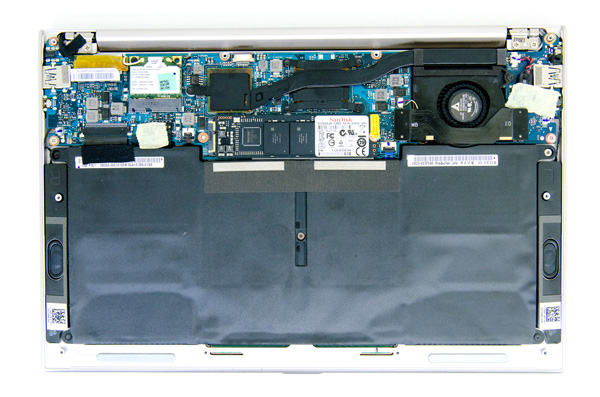
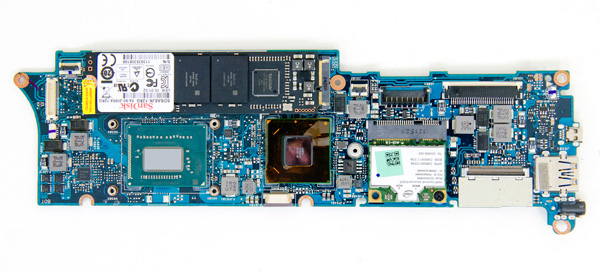
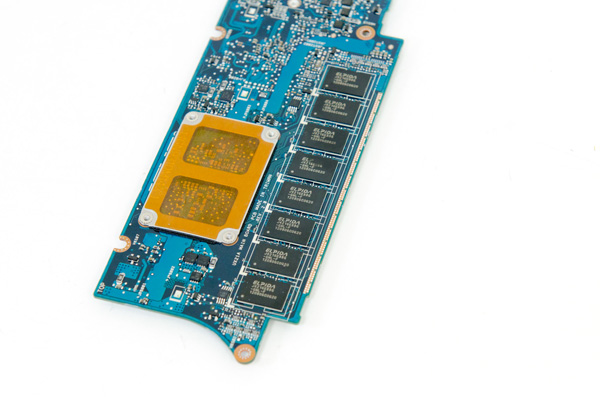

 Quote
Quote


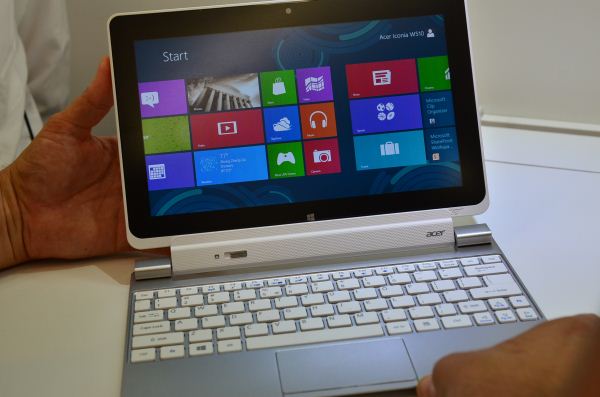







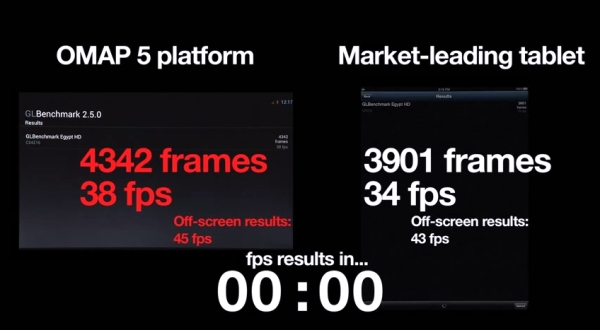

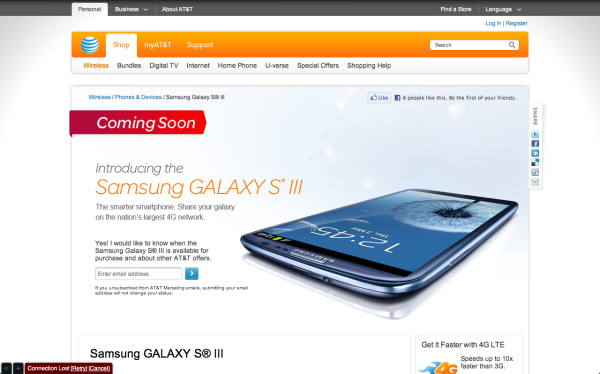
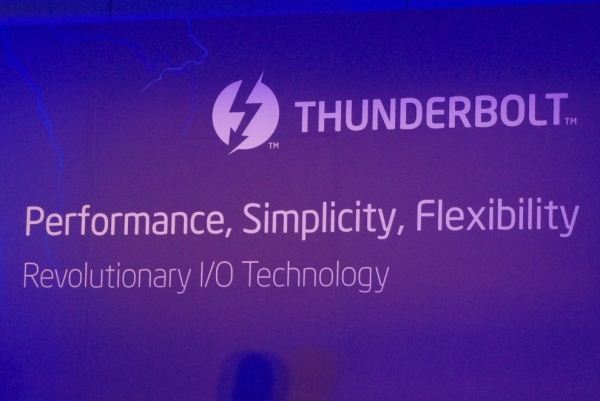
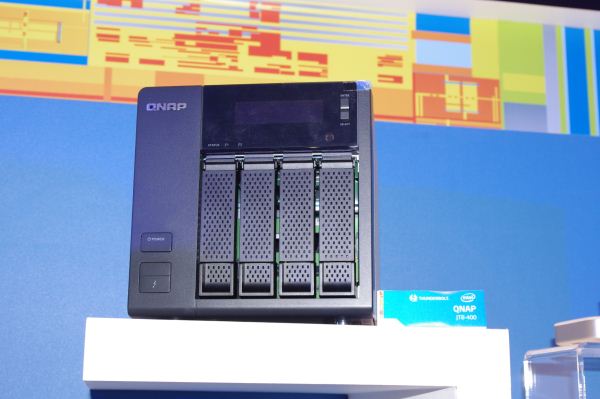




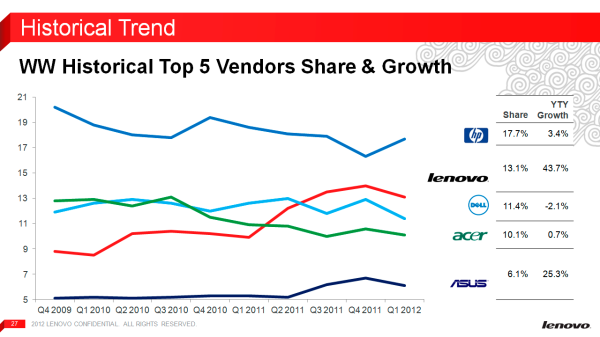


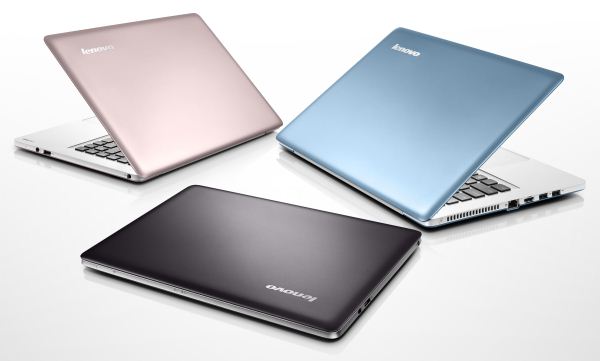
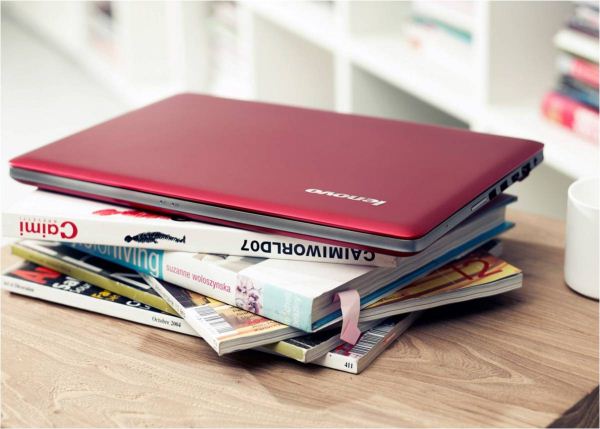
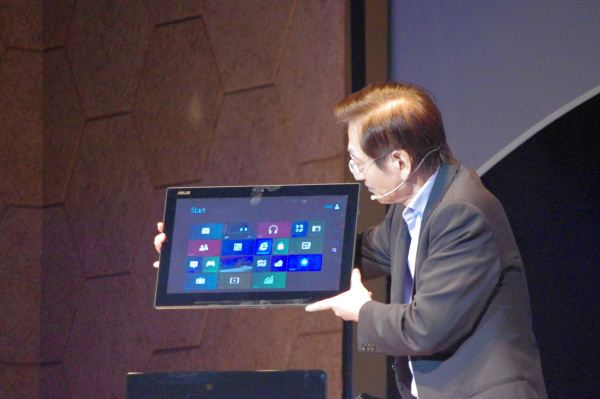




















Bookmarks